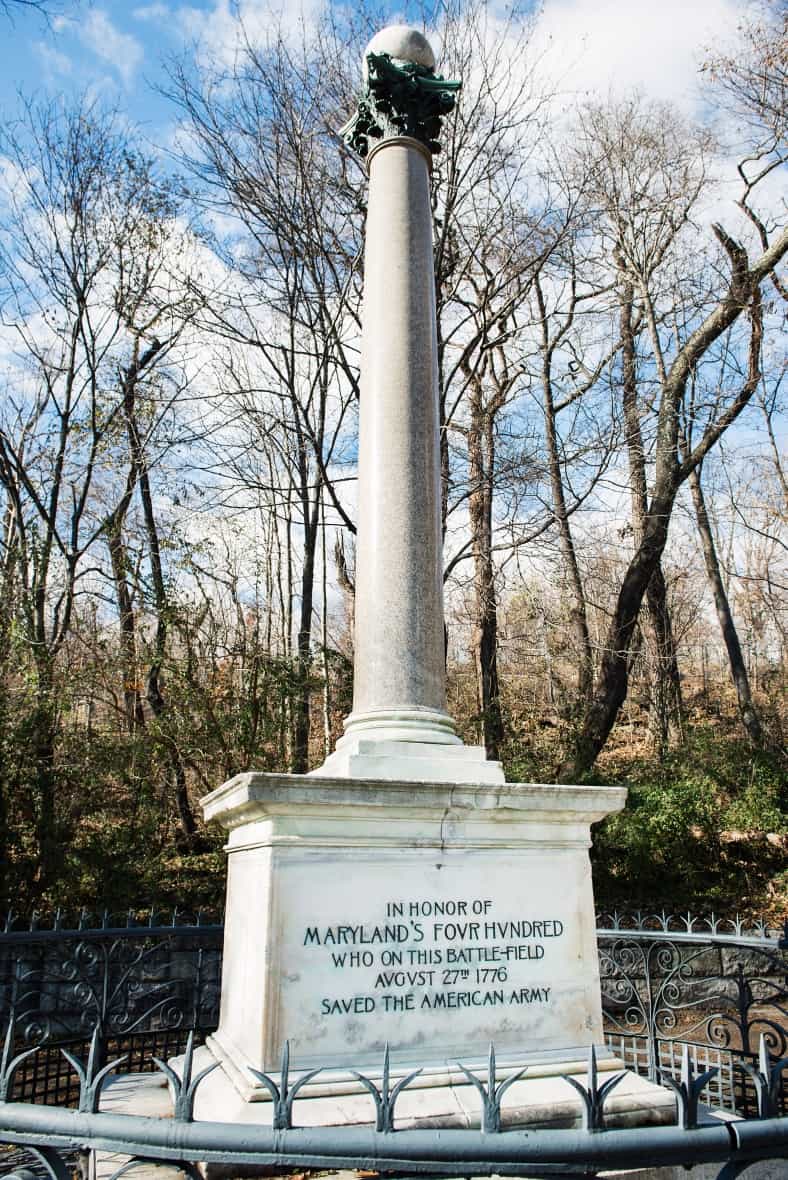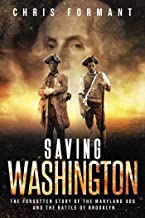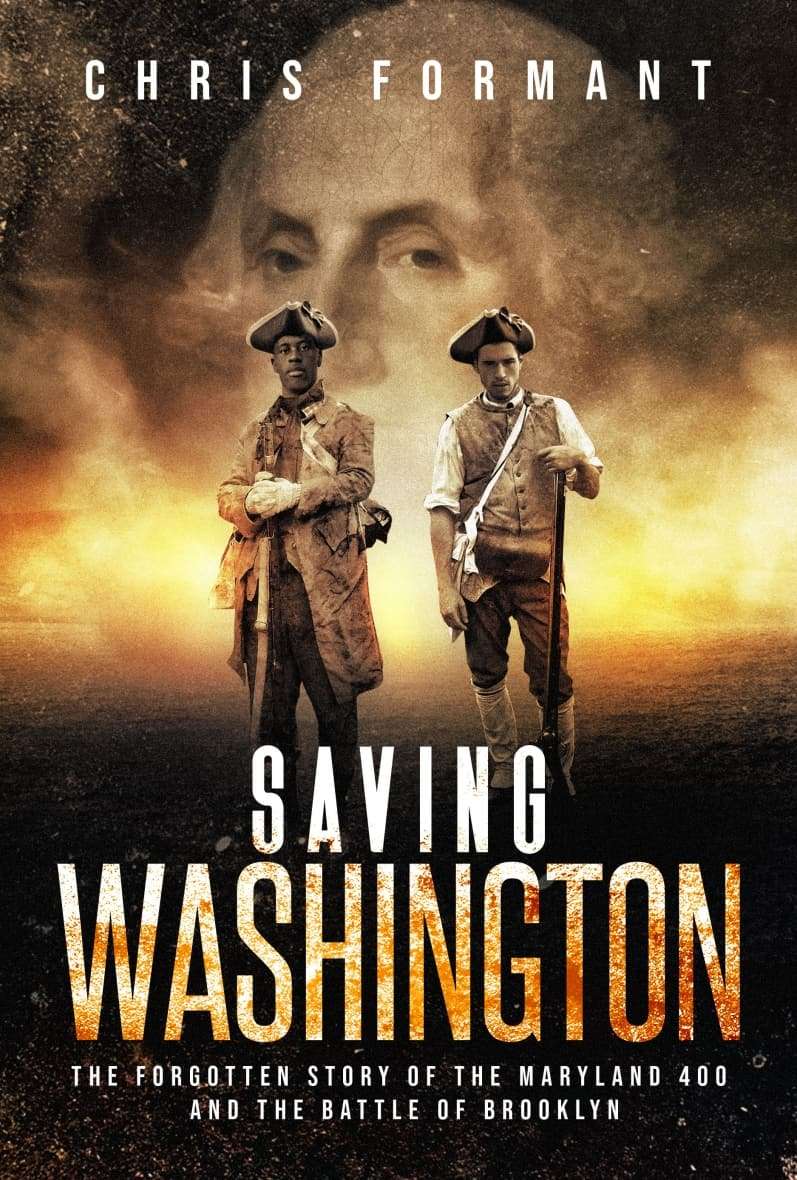Saving Washington
On a marshy Brooklyn battlefield on August 27, 1776, 400 men from Baltimore, MD, assembled to do battle with a vastly superior British army. Seemingly overnight, these young soldiers matured from naïve teenagers to perhaps the most important, yet most forgotten, citizen soldiers in all of American history. In Chris Formant’s latest novel, Saving Washington: The Forgotten Story of the Maryland 400 and The Battle of Brooklyn (Permuted Press), young Joshua Bolton and his childhood friend Ben, a freed black man, witness British tyranny firsthand, become enraptured by the cause, and ultimately enlist to defend their new nation in a battle that galvanized America on the eve of its birth. Formant’s gripping tale blends real-life historical figures and events with richly developed fictional characters in a multidimensional world of intrigue, romance, comradeship, and sacrifice, transporting us two and a half centuries back in time to the bustling streets of Baltimore and the bloody, smoke-filled carnage of battle in Brooklyn. For more on Formant’s transporting tale, read BookTrib’s exclusive interview.
BookTrib: How did you first learn of The Maryland 400?
Chris Formant: A few years ago, I accidently came across a one-paragraph announcement describing a wreath ceremony near Prospect Park, Brooklyn honoring the heroism of a Maryland regiment that served in the Battle of Brooklyn (also known as the Battle of Long Island) during the Revolutionary War. I wondered: Why haven’t I ever heard anything about this regiment and their heroics? What was the extent of their involvement? What really occurred on that battlefield? My interest piqued. I began peeling back the centuries of historic dust that covered this pivotal, but faded moment in American history. My research became the basis for the concept of a historical novel and led me to visit the Army War College in Carlisle, PA. There I met with decorated military leaders, bringing them to tears as I explained the bravery of these selfless citizen soldiers. These men did not attain proper recognition for their sacrifices, and their bodies are scattered in unmarked graves under the streets of Brooklyn.BT: Why were The Maryland 400 so significant?
CF: These heroic men from Baltimore held back superior British forces long enough to preserve the Continental Army and save the life of General George Washington. The true story of these young men—who they were and why they acted with such bravery—is the stuff of legends. And yet, their courageous engagement is barely a footnote in popular accounts of the American Revolution, if mentioned at all. Only the most dedicated followers of Maryland’s history are aware that the state’s nickname “The Old Line State” is in tribute to these soldiers. This is all the more astonishing considering the Battle of Brooklyn was the largest full-scale battle of the Revolutionary War in terms of deployment and fighting. Perhaps this historic, vital battle has been overlooked because it was such an overwhelming defeat for the Continental Army.
BT: In your book, the character of Josh Bolton is a teenager when he enlists with the Maryland militia. What inspired Josh to join?
CF: As the mood of the colonies gets progressively more emboldened, Josh’s emotions begin to soar as he is continuously bombarded by the political, legal and religious rhetoric. When he experiences British tyranny firsthand, he enlists in the Baltimore militia.BT: You tell the story of the Battle of Brooklyn through the eyes of teenagers. Why did you choose to tell the story of one of the most famous battles of the American Revolution through their eyes?
CF: Teenagers fight our wars and there is little ever written from their perspective. We have all been taught that the Revolution was a tax revolt. But teenagers don’t sacrifice themselves for taxes. So I wanted to answer, “then why did they?”BT: Josh’s best friend is a freed black man named Ben. Were freed slaves part of the armies? What challenges did they face?
CF: Blacks did participate. Some as free men, some as paid substitutes or for their owners. It is hard not to believe that they faced racial discrimination in a variety of forms; living conditions, equipment, positions in battle, etc.BT: There are several real-life characters in your novel. Why did you want to include them?
CF: Aside from Josh and his family and close friends, the rest are actual people. I wanted to add as many historical facts as possible. I did take some liberties with some of the events and timing, in order to make the story more compelling.BT: In some of the scenes, soldiers get sick. How common was illness at the various camps?
CF: Very common. Because of the unsanitary conditions they operated in, it could not be avoided.BT: How many Red Coats were the Marylanders up against during the Battle of Brooklyn?
CF: The estimates are inconclusive, ranging from 3,000 to as high as 20,000 soldiers.BT: What types of weapons did the Marylanders have? How did they compare to the weapons used by the British?
CF: They had a combination of traditional muskets, pistols, swords and cannons. Some were military grade, but many were personal weapons and unreliable. Some had uniquely bored long rifles, that had a firing range superior to British rifles. The British were the most well-trained and well-equipped army in the world.BT: Many times, authors keep writing books in the same genre. Your debut novel, Bright Midnight, was a rock ‘n roll thriller for which you did an incredible amount of research. Saving Washington is historic fiction. Why the switch?
CF: I like to tell good stories. I don’t think of myself so much as a writer but as a storyteller. The next book I am working on is a Stephen King-style horror story with a female lead.BT: Where did you research this book?
CF: As you would expect: online research, everything I could find on the Battle of Brooklyn and the Maryland 400, military libraries and experts, and historical societies. The Army War College was especially helpful.BT: Why do you suppose so little is mentioned in history books about the bravery and heroism of The Maryland 400?
CF: It’s very strange, but I think because we were routed and so badly defeated. It’s more fun to write about victories than devastating losses.BT: The Battle of Brooklyn happened nearly 250 years ago. Much has changed since then, but are there any key landmarks still standing that would be of interest to history buffs?
CF: The Old Stone House still stands. There are a few monuments dedicated to the Battle and to the Maryland 400. There is a small plaque near the site where some believe they fell. Saving Washington: The Forgotten Story of the Maryland 400 and The Battle of Brooklyn will be available to purchase Feb. 19, 2019. Learn more about Chris on his Author Profile page.Want more BookTrib? Sign up NOW for news and giveaways!
Buy this Book!
Amazon





